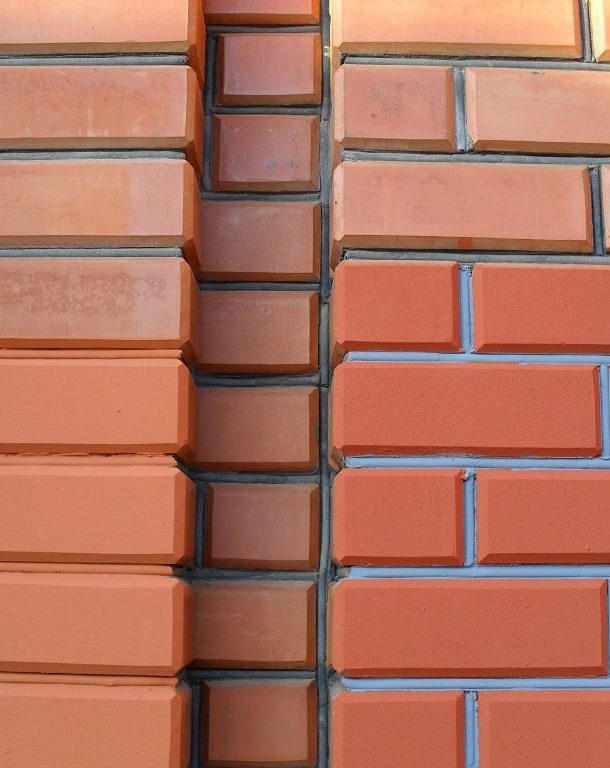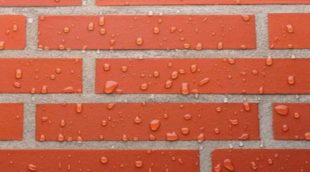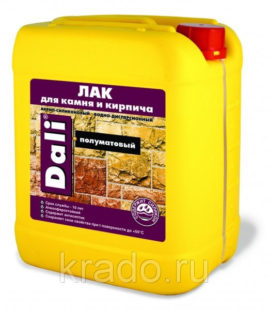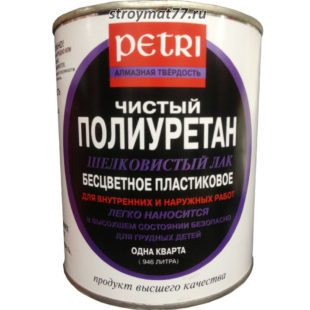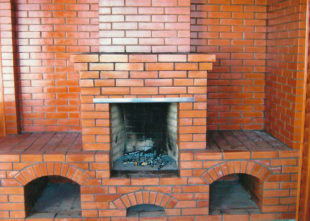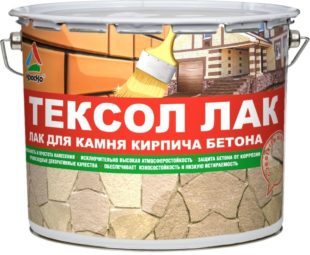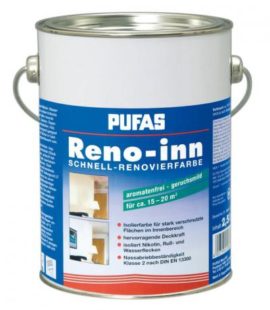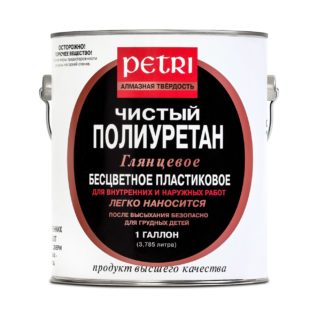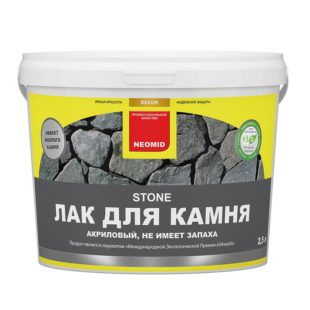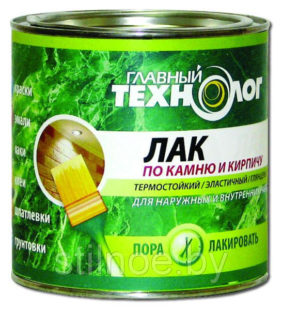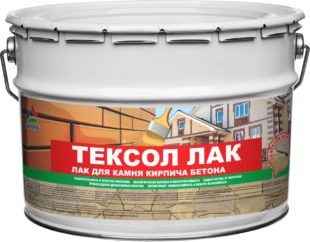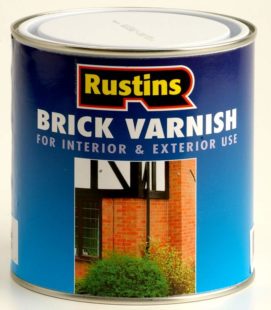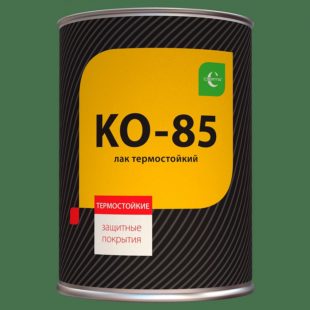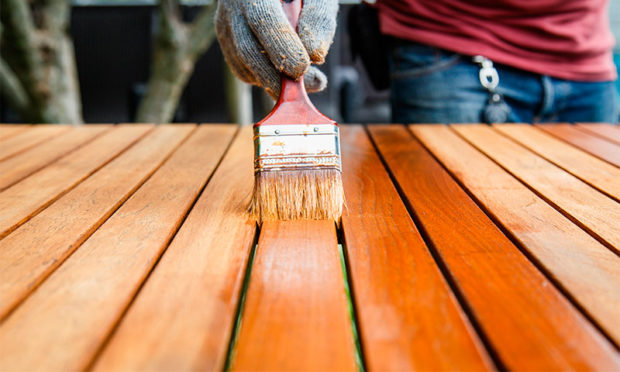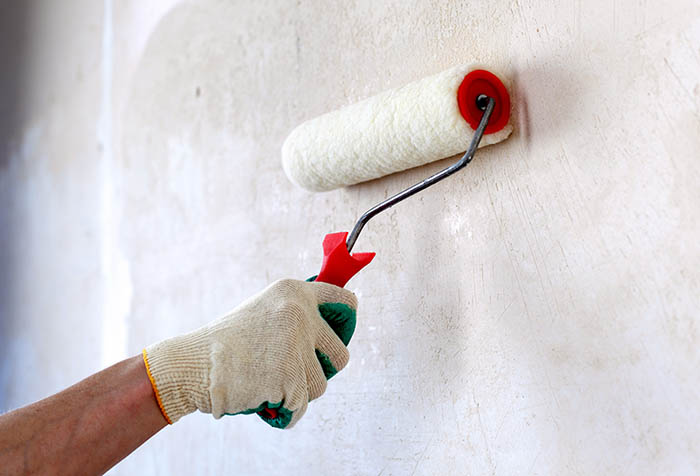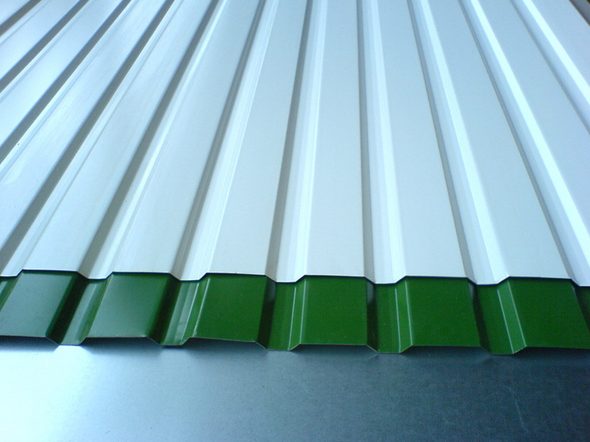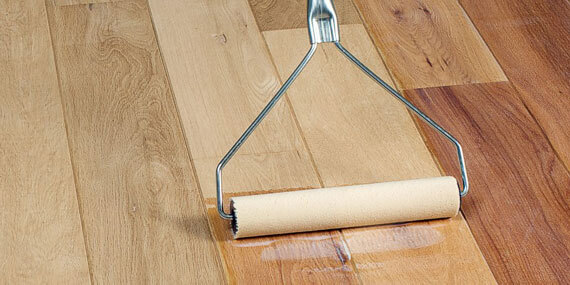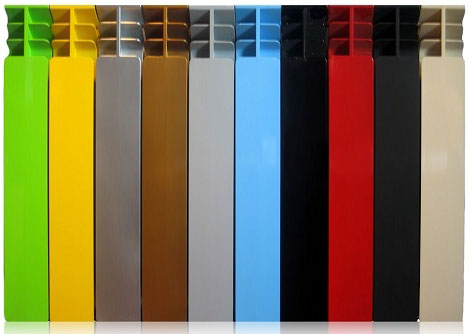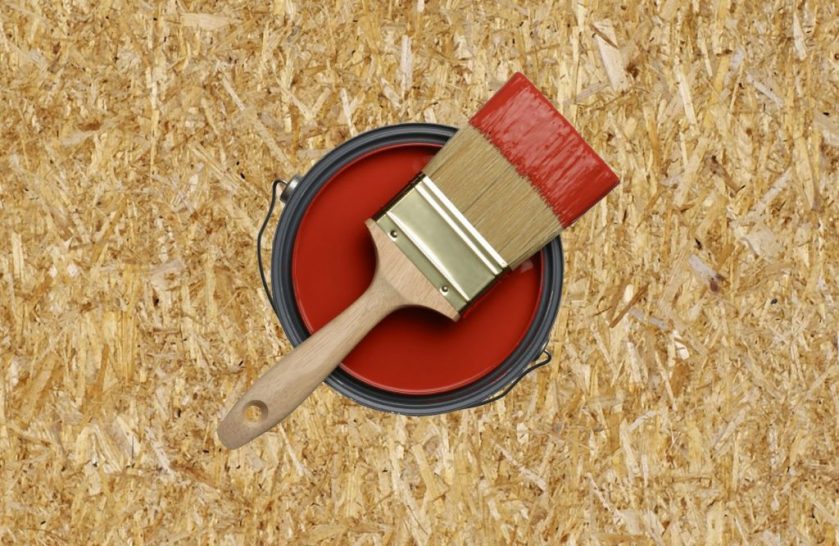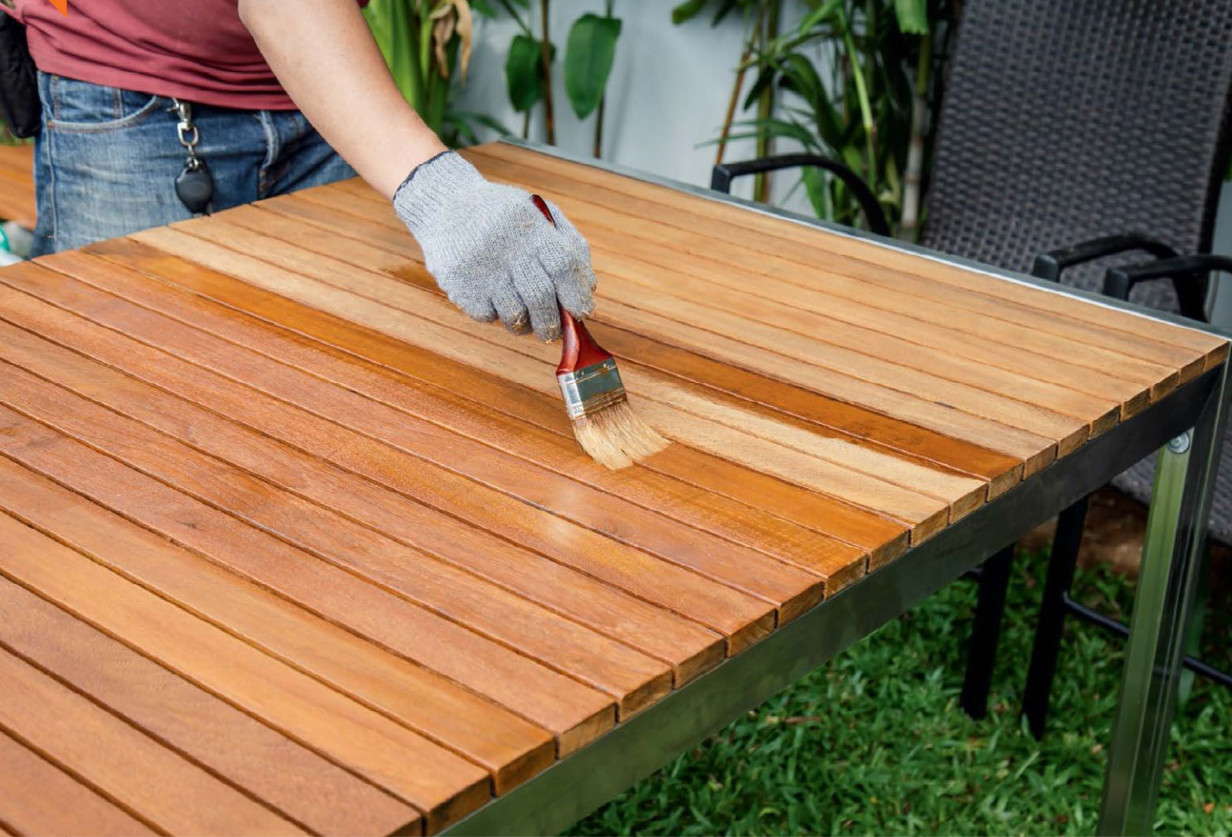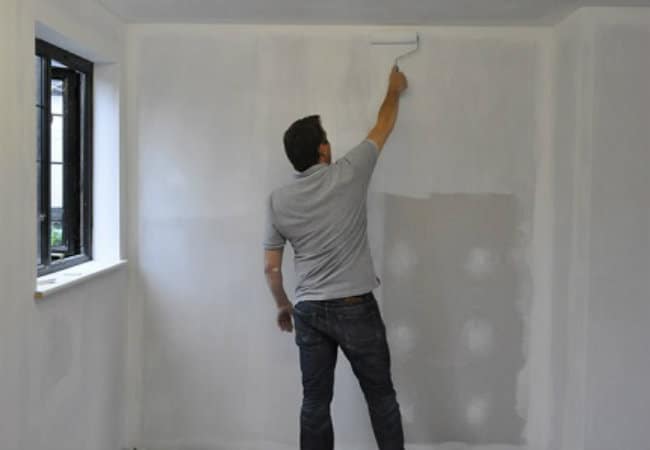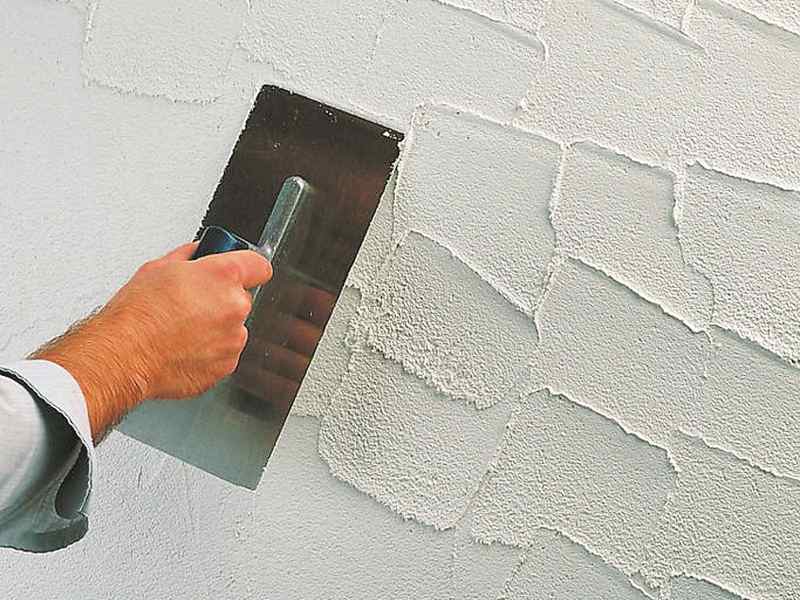5 Tips for Choosing a Brick Lacquer
Brick is the most popular building material, it is used both for the construction of multi-storey buildings and for masonry stoves, fireplaces. Such structures are distinguished by strength, aesthetic appearance, durability. However, due to precipitation, seasonal temperature changes over time, cracks form on it, which gradually expand. To prevent the destruction of walls, education fungus and mold, experts recommend the use of special impregnations and varnishes for brick foundations. They help keep attractive. building facadeas well as improve its performance. Today in any hardware store you can find a huge assortment of paints. Each of them has its own nuances associated with the application technique, consumption, operating conditions, as well as cost. In this article, we will figure out which brick varnish is better to choose in order to get the desired effect.
No. 1. Types of protective materials
All varieties of coatings have the following properties:
- Prevention of penetration of moisture, chemicals into the building material.Brick absorbs moisture well, whether it is dew, rain or condensation. The varnish coating has water-repellent properties, which allows to improve the operational characteristics of the structure.
- Fortification. Means penetrates deep into the material, thereby strengthening it.
- High temperature protection. Heat resistant varnish eliminate the possibility of destruction of the stove wallwhich is constantly exposed to high temperatures.
- UV resistant. Paint coat emphasizes brick structuremakes it more expressive. Based on the objectives of its acquisition, manufacturers offer matte, glossy, semi-gloss and semi-gloss options.
- Prevention of fungus and mold. In shady, moist areas of brick buildings, the likelihood of fungus formation is high. Paintwork helps keep the building dry..
- Protection against dirt and dust. By applying varnish to the surface, a durable smooth film is formed on it, on which dust does not settle.
Using lacquer coating can improve the appearance of a brick wall. The choice of a suitable option depends on where you will use it: for decorating external or internal walls or for treating fireplaces and stove structures.
No. 2. What are the varnishes in composition
Brick varnish is a universal remedy for protecting a brick base. But in order for the varnish to lie flat on the material and fully perform its functions, it is necessary to choose it correctly, paying attention to its composition.
Polymer varnishes
This is the most popular type of paintwork. Demand for this product is explained by the versatility of its application. It can be used in work with brick and concrete bases. It is possible to apply polymer varnish at sub-zero temperatures and in rooms without heating. It is easy to apply, dries quickly and protects the material from scratches, cracks, moisture and dust. The mixture can be used to protect internal and external walls.Due to the simplicity of applying the polymer composition, it can be used by both professional masters and beginners. Polymer varnishes have an affordable cost.
Silicone Acrylic Varnishes
This type of coatings is suitable for application on interior walls. Silicone-acrylic mixture can cover not only brick, but also concrete, ceramic tile, drywallmetal. The composition is often used for application to decorative elements.
Due to the presence of special polymers in the mixture, the varnish can be of various shades. In addition to the protective layer, the wall treated with this compound can be transformed into any color, depending on your wishes.
Silicone-acrylic varnish protects the base from alkalis, acetone, oils. The only negative of such mixtures is the price, which is much higher than polymer analogues.
Polyurethane varnishes
This is a universal tool that can be used to cover external and internal walls. It is polyurethane varnishes that create the “wet” effect on a brick basis. They have excellent moisture repellent characteristics, which is why they are most often purchased for processing exterior walls. The popularity of polyurethane varnishes is also due to the fact that they can be used to process not only brick, but also concrete substrates.
Heat-resistant varnishes for fireplaces and stoves
This is a separate category of coatings, which differ in the characteristics of heat resistance, fire resistance. They are designed to prevent condensation on oven walls and fireplaces. Due to their high moisture resistance, such paints are also purchased for decoration and protection of building facades.
Solvent Varnishes
These compounds are based on silicone resin and solvents. When penetrated into the material, they create strong protection, preventing cracking and loss of color. But, at the same time, such varnishes easily ignite, and it is necessary to work with them extremely carefully, observing safety rules.
Impregnation
In order to strengthen any paintwork, you can use special sealing impregnation. They are made on the basis of silicone and acrylic resins with the addition of aromatic, aliphatic solvents. Due to this composition, maximum protection of the paintwork for the brick base is ensured. When using impregnation, deep penetration of paintwork materials into the building material is guaranteed.
In addition, sealing agents create an additional protective layer against seasonal precipitation, chemicals and UV rays. Many manufacturers also offer decorated wet stone options. The negative side of such impregnations is the use only for external or internal walls, they can not be used in work with stove and fireplace installations.
No. 3. Russian or foreign, which brand is better?
On the shelves in construction stores you can find a lot of coatings with the same characteristics, but from different manufacturers. How not to get on a bright label and get really effective compounds?
Pufas
In the ranking of the best paints and varnishes this company takes first place. This is a German manufacturer, which is one of the oldest concerns in the global paint and varnish production market. The company's assortment includes more than two hundred types of finishing compounds for working with various materials. The company's products are successfully delivered to Russia, Ukraine. Pufas varnishes dry quickly, have no pungent odors, and are easy to apply. They are distinguished by high quality standards and corresponding cost.
Petri
This is an American manufacturer whose products have positively established themselves in the domestic buyer. The LKM line with the “wet stone” effect for a brick base is especially in demand. Petri impregnation prevents contamination, base deterioration and mechanical wear. They are also odorless and dry quickly.
Neomid
In the Russian market of paints and varnishes, Neomid Stone has gained the most popularity. It produces high-quality impregnations, varnishes, in which there is no dangerous toxic smell. This product can be used without problems in small rooms. The following qualities are also characteristic of Neomid varnishes:
- Form style. The company offers matte and semi-matte coatings, while others offer glossy and semi-gloss options.
- Reliability. The manufacturer took care of the increased level of protection against moisture.
- Antifungal impregnation. The varnish creates a dense protective film that prevents the likelihood of fungus formation.
“Chief Technologist”
This is a Russian manufacturer that specializes in the development of heat-resistant compounds for fireplaces, stoves, furnaces. The products of this company are made from foreign raw materials. The “Chief Technologist” paints and varnishes quickly dry, but immediately after their application an unpleasant toxic smell is felt.
KrasKo
The company offers several options for compositions for coating brick foundations: “Proteksil”, “Epoksol”, “Texil” and “Aquastone”. Production technologies are Russian, and raw materials are foreign. High-quality compositions of “KrasKo” have an affordable cost, which is why they are popular among domestic consumers.
Rustins (UK)
The most popular among the proposed compositions by this company is the heat-resistant Brick Varnish varnish (matte). It withstands temperatures up to +150, prevents the appearance of fungus, cracks, does not lose color. But its cost is much higher than its Russian counterparts.
Refractory KO-85
This type of paintwork is specially designed for stoves, fireplaces and fireboxes. It is suitable for working with metal, stone, ceramic, concrete, brick and even wooden substrates. Refractory varnish does not support combustion, reliably protects from fire, destruction. It can be applied even at low temperatures. It dries quickly, and the pungent odor quickly disappears. When applying only one layer, the surface will be reliably protected from moisture, condensate.
Number 4. Selection Criteria
The choice of the most suitable paint and varnish composition depends on the place of its application. In work with external walls, facades of buildings and street structures (pergolas, fences) it is necessary to give preference to means with a high level of moisture protection, resistance to UV rays. Also, such varnishes should look spectacular on brickwork, without losing their decorating functions during the period of seasonal precipitation.
Compositions for fireplaces and stoves put forward other requirements:
- Lack of toxicity. The varnish should not have an unpleasant odor, since when heated, dangerous toxins can be released.
- Resistance to heat. To cover fireplace structures, only specialized compounds that are fireproof should be used.
To cover the internal brick walls, it is better to give preference to acrylic or silicone compounds. The choice of such varnishes is large enough to focus on the most profitable option.
No. 5 Recommendations for applying varnish to a brick base
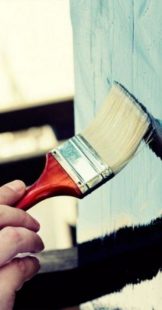 When deciding to use paintwork materials for the purpose of protecting and decorating brick walls, it is important to remember that in order to obtain the desired result, you should not only choose the most effective tool, but also observe all the subtleties of the coating.
When deciding to use paintwork materials for the purpose of protecting and decorating brick walls, it is important to remember that in order to obtain the desired result, you should not only choose the most effective tool, but also observe all the subtleties of the coating.
Varnish can be applied to walls different ways: with a brush, roller or spray gun. Manufacturers insist that the composition should be applied in several layers (at least two). In addition, it is important to observe several important recommendations:
- To apply varnish should be at a temperature not lower than 10 no higher than 30 degrees.
- Each applied layer needs time to absorb and dry.
- It is possible to varnish a brick base only after preliminary processing of the material.
Work sequence
- Brick foundation preparation.The wall must be thoroughly cleaned of old paint, dirt, dust. This can be done using building hair dryer, solvent. Excess cement can be knocked down with a hammer or chisel. Small cracks can puttyand then sand the surface sand paper.
- Cleaning from dust and dirt. You can wash the base using household detergent. This is necessary to eliminate salt stains, dirt and dust. After cleaning, the wall needs to dry.
- Deep penetration application. For greater efficiency priming it is better to use the same company as the varnish. You can apply it with a brush, roller.
- Varnishing. With the help of a roller (pile length 2 mm), a spray gun or a nylon brush, you can start coating the wall with varnish. Apply the composition from top to bottom.
- Consumption. As a rule, for application in one layer per 1 m2, 100-200 grams of varnish will be needed.
The ideal time for varnishing is the warm season and low humidity. This will allow the solution to lie evenly, without streaks. The drying time of each layer is 1-2 hours, for quick-drying compositions - 30 minutes. It takes 1-2 days to dry the finish.
To select the most suitable coatings, it is important to consider the following factors: the place of its use, protective characteristics, manufacturer, drying speed, decorating effects, cost, and service life. Monitoring prices and features may take some time, but as a result you can be sure that your walls will last for many years without losing their aesthetics and functionality.

